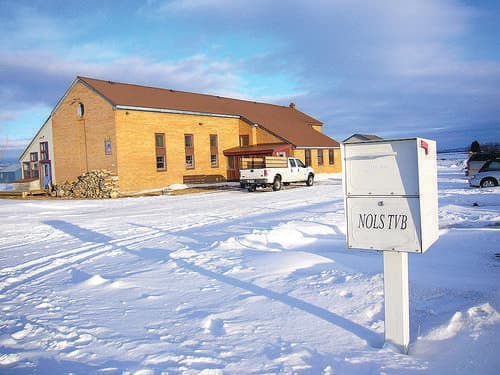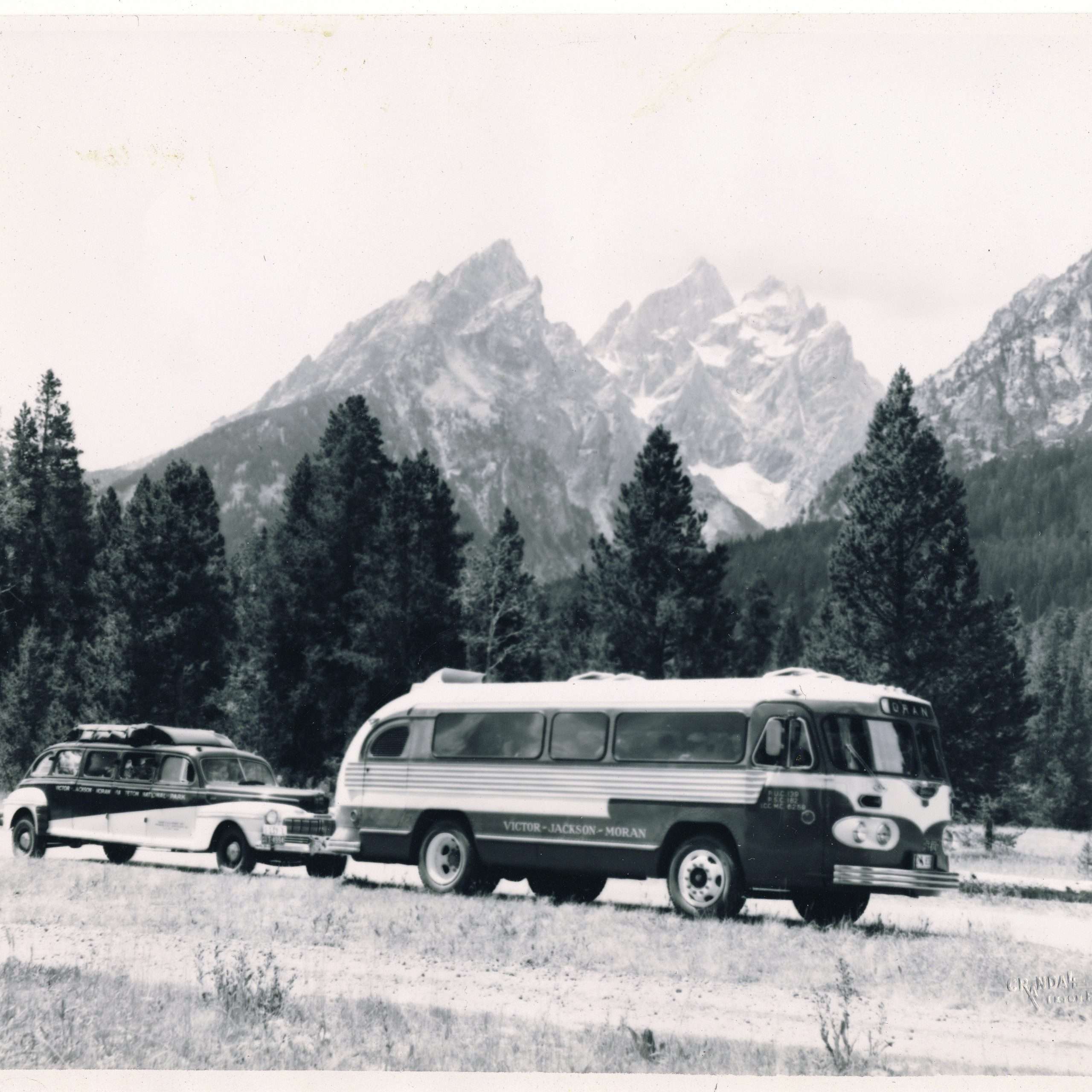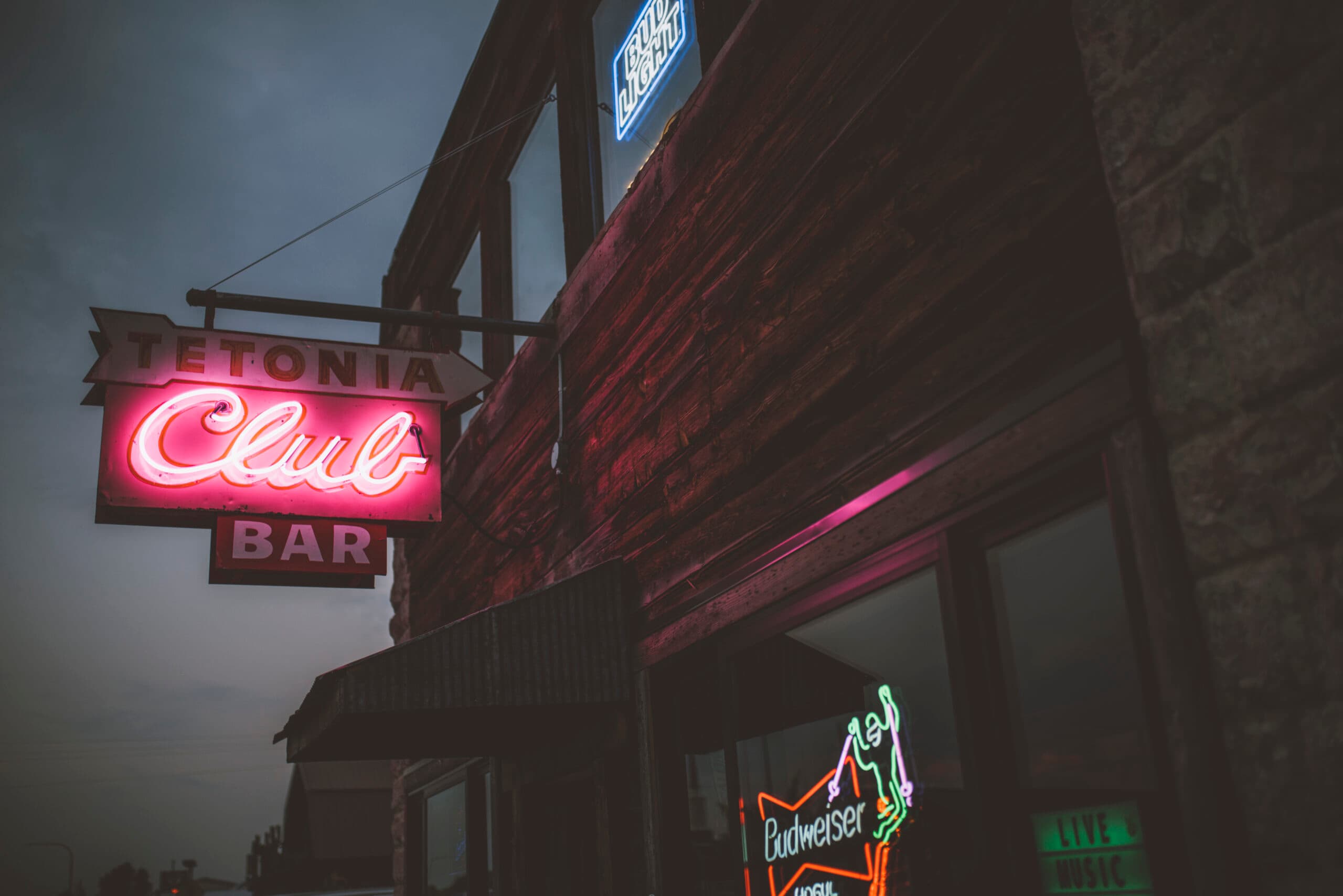Old LDS Church Houses
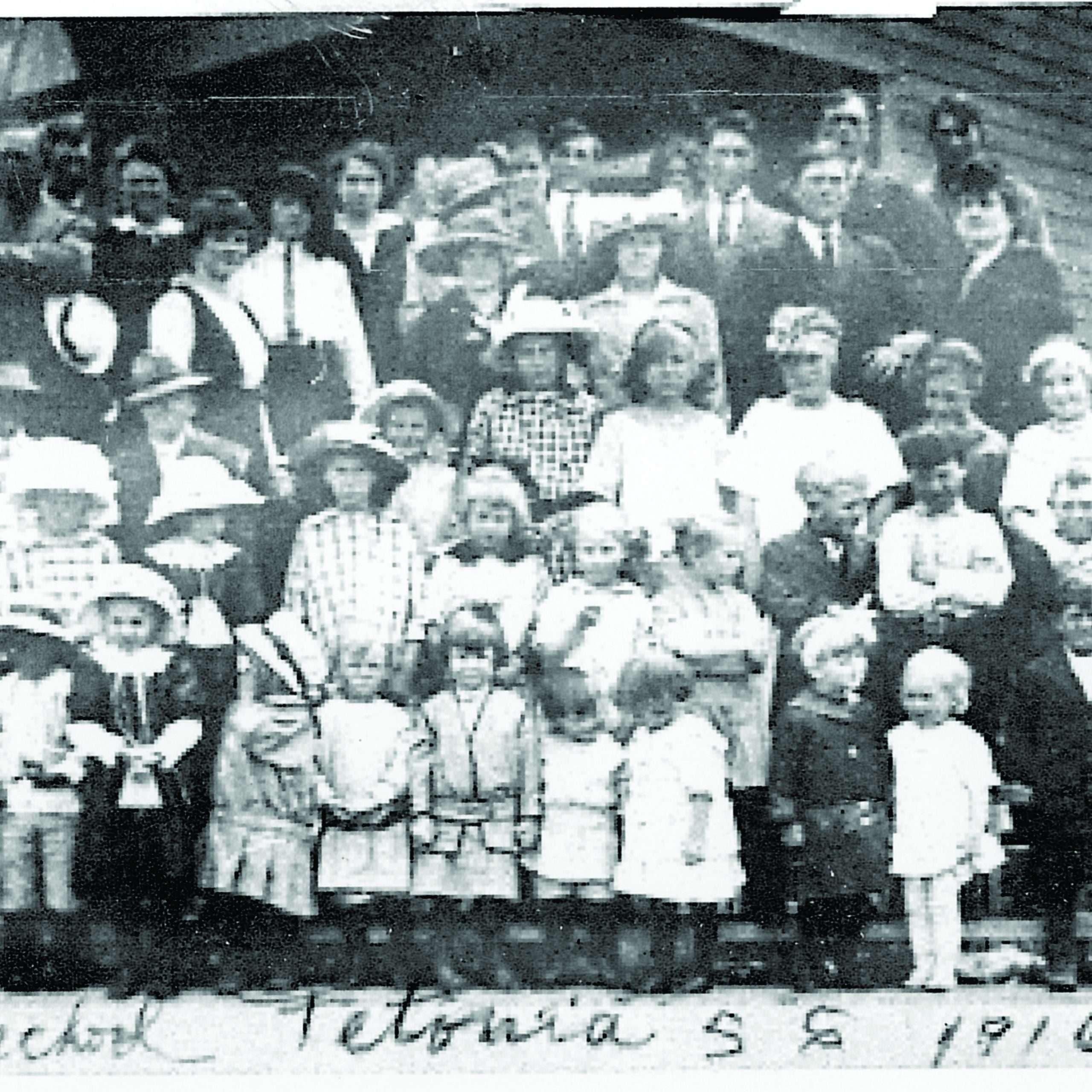
Sunday school children pose for a photography in front of the old Tetonia Ward. Photo courtesy of Teton Valley Museum.
It’s not uncommon these days to hear residents joking about the town of “Drictor” running the length of the highway corridor between the valley’s two primary centers of residence and enterprise.
But what many folks don’t know is that Victor and Driggs, along with Tetonia and Alta, have not always been the only defined communities in Teton Valley. In fact, just a few decades back, more than a dozen small townships dotted the valley floor.
While the majority of the townships have since been absorbed into the valley’s four main towns, many of their old church houses still stand—tangible evidence of places that served the spiritual and social needs of families often isolated by harsh winters and long distances. And, although their current roles vary, these church houses remain significant to those who live, play, and work within their walls.
PRATT CHURCH HOUSE WHERE PEOPLE STILL PRAY
ORIGINALLY, IN THE late 1800s, all valley members of the Church of Jesus Christ of Latter-day Saints were grouped into a single ward known as the Aline Ward. The Aline church house, a small log building topped with a dirt roof, was located approximately one mile north of downtown Driggs. But as the dirt roof began to cave in, rendering the structure unusable, Bishop Mathoni W. Pratt moved the congregation to present-day Alta in 1895. Today, a new home is being constructed on the site of the Pratt Ward’s original church, just north of the Alta School on a small hill. But the second Pratt church house, constructed in the early 1940s with rock quarried from North Leigh Canyon, still stands across the parking lot from the Alta School.
Though the Mormon Church sold the building in 1993, valley residents still worship in the structure through services provided by Saint Francis of the Tetons Episcopalian Church.
Inside, a table holding a display of LED lights, fair-trade coffee, and boxes for recycling serves as testament to the congregation’s goal of becoming a “green church,” and photos of church members line the entry hall, some featured with their pets—after all, Saint Francis is the patron saint of animals and the environment.
“On Christmas, it seems like half the poinsettias are put out in memory of someone’s pet,” says congregation member Kim Billimoria. “There are just so many animal lovers there.”
“[The name Saint Francis] was just right for this area,” adds Angela Warner, who suggested the name back in the early 1990s. Warner, who used to drive over Teton Pass to Jackson with her children to attend Episcopalian services, was elated when the Episcopalian diocese decided to purchase the Pratt church house. Much remains from the church’s earlier days, including the stage and its curtains, the light fixtures, and the pews.
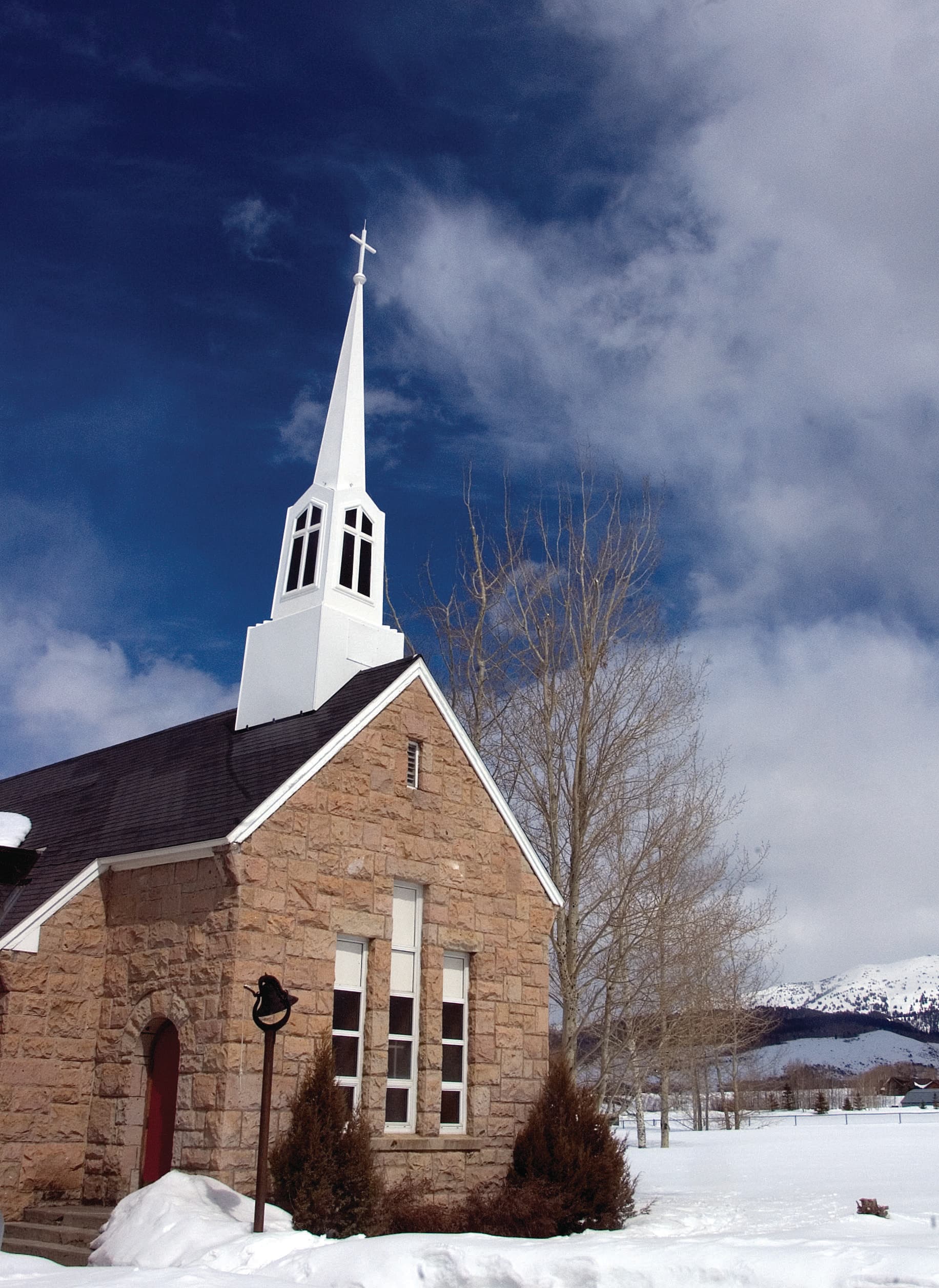
Today the old Pratt Ward church house serves the congregation of Saint Francis of the Tetons Episcopalian church. Photo courtesy of Dr. Grant Wilson.
Today the old Pratt Ward church house serves the congregation of Saint Francis of the Tetons Episcopalian church. Photo courtesy of Dr. Grant Wilson.
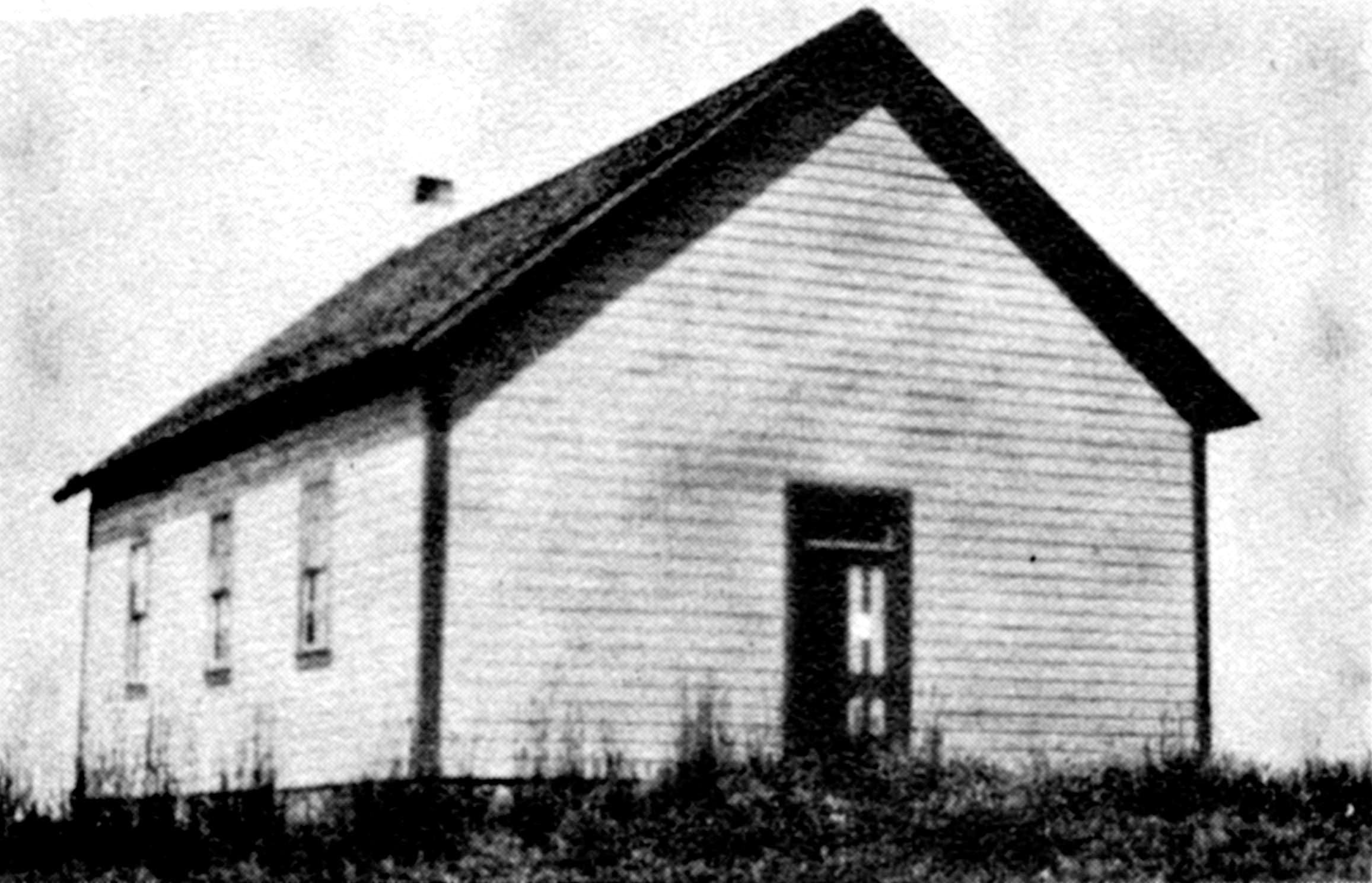
Photo courtesy of Murle Kay.
Photo courtesy of Murle Kay.

Today the old Pratt Ward church house serves the congregation of Saint Francis of the Tetons Episcopalian church. Photo courtesy of Dr. Grant Wilson.

Photo courtesy of Murle Kay.
RICHVALE CHURCH HOUSE HOME TO A PHOTOGRAPHER
AT THE MOUTH of Packsaddle Canyon, a small tan house sits perched atop a small knoll, with fields spreading away in all directions. Today it is the home of Pete and Mary Lou Oslund. But Murle Kay, who still lives in the area, remembers celebrating her wedding night there, when it was the Richvale community hall. It was there that she danced for the first time as Mrs. Vernal Kay. Laughing, she recalls the band that played that night: “It was a two-piece outfit with a piano and guitar that would jing out some music for us to jiggle with.”
The Richvale community hall was built in the early 1930s by the Works Progress Administration, a New Deal program designed to put the unemployed to work on public projects. It was regularly used by the Richvale
Ward for services, and the church ultimately gained ownership of it.
“My mother [Belle Jardine] was really upset when the church sold it, because they’d built it as a community, without help from the church,” says Verle Jardine.
Eventually, the Richvale Ward’s con- gregation was consolidated into the Cache and Tetonia wards, in order to meet the schooling needs of the children. When the Oslunds purchased the property, in order to make the structure liveable it had to be retrofitted for electricity and running water.
Out of respect for neighbors like Kay, the Oslunds say they attempted to keep the original structure as intact as possible. The back of the house, the side most visible to neighbors, remained unchanged, while a window added to the front maximizes Teton views. The Oslunds also raised the roof four feet and added a second floor. Today the stage—a key feature in all of the valley’s church houses—holds the Oslunds’ kitchen and dining room. Next to the original structure, a newly built, Lshaped outbuilding serves as a garage and studio for Mary Lou’s work as a professional photographer.
A former teacher at Marsh Valley High School outside Pocatello, Mary Lou recalls two of her colleagues who had grown up in the Richvale Ward sharing stories of riding their horses inside the building when they were kids, and of shooting guns inside. So, it was no big surprise to the Oslunds when they found buckshot embedded in the wood while replacing windows during the remodel.
“It’s marvelous that they’re rejuvenating it,” says Kay, when asked how she feels about the community hall’s current usage. “It’s wonderful that it’s been kept.”
DARBY CHURCH HOUSE THRESHOLD TO THE WILDERNESS
DARBY CANYON, WITH its thick groves of aspen and conifers and its clear running stream, is a perfect place for introducing people to the outdoors. Who, then, could be a more appropriate occupant of the old Darby church house than the National Outdoor Leadership School (NOLS), which offers multi-day courses in wilderness skills like backpacking and backcountry skiing?
The first Darby church, completed in 1896, stood at the mouth of Darby Canyon. The log building was later moved to the nearby Penfold farm, and subsequently to the township site where the existing structure stands. The original church burned in a 1946 fire, which was started by a defective flue in the midst of a carol rehearsal. The event is described in the book Diamond Jubilee , published by Ricks College Press in 1982: “Sister Mary Weston led the group in singing ‘Master the Tempest is Raging,’ and as the group sang, everyone left the building quietly and orderly, each taking a chair and a child.”
Delmar Hill remembers the winter of 1948, when construction began on the new church house. Men from the ward headed out in horse-drawn sleighs, he said, and up the slopes above his family’s house in Hill Creek to fell trees for the new building.
“The men would bet which way the tree would go when it fell,” Hill says.“If they were wrong, it cost them a box of chocolates.” He chuckles nostalgically as he reminisces about the camaraderie, and the kinship members of the Darby Ward felt toward one another.
Today, rather than resounding with the singing of the congregation, the wood floors of the old Darby church house echo with the clomp of ski- and hiking-boot soles. Though it’s no longer a place of worship, it still serves as a place where many of those entering are transformed forever—into lovers of the mountains and wild country.

TETONIA CHURCH HOUSE AN ARTIST’S HAVEN
LONG BEFORE TETONIA was a recognized town, the township of Haden was the valley’s northern focal point, with a church house located approximately a mile south and a half mile east of Harrop Bridge (which spans the Teton River on Highway 33 northwest of Tetonia). But in the early 1910s, when the new railroad line reached present day Tetonia, the Haden congregation migrated to the new Tetonia Ward.
Lyle Smith, who served for twelve years as the Tetonia Ward’s bishop, remembers there was always something going on at the church, like bazaars, dances, and weddings. In his room at Rexburg’s Teton House assisted living facility, the nonagenarian recalls attending a fundraiser for the building with his mother and father, and the fun they had interacting with neighbors at these types of social events.
When Natalie Clark purchased the property in 1992, the dilapidated building had been taken over by feral cats. It was in utter disarray, she said, after stints as a lumber yard office, plumbing shop, and mechanic’s garage. Despite the tremendous amount of work she knew lay ahead, she was taken with the building’s history. Old church buildings like this are “national treasures,” says Clark, who earlier had been inspired by the restoration of similar church houses she’d seen in North Dakota and South Dakota.
“The guy I bought it from remembers being a sheep in a play [at the church],” Clark says. “But he couldn’t see through the sheep suit, and he fell off the stage.”
Enlisting the help of artist friends— Clark is a sculptor—and locals like Greer Jones, who did the restoration work, she began the long renovation process, which would turn the old church house into a stunning space for working and living. The front of the former church, which serves as Clark’s studio, is sparsely but elegantly decorated with prints, antiques, and artifacts from around the world. The hardwood floors that Naomia Kempton (who grew up attending the Tetonia church house but moved to Alta as an adult) remembers washing with water during Sunday School—helping to explain their now-buckled nature—have been restored. So, too, have the windows and trim, and a pair of small lofts on either side of the entrance to the altar area were added to serve as bedrooms for Clark’s two sons. The altar area itself is now a small studio apartment; a sanctuary of color and creativity. Each feature, whether it’s the brightly painted kitchen table bejeweled with small mirrors or the old Victorian lamp dressed in a string of beads, seems to have a story to tell, just like the building housing them.
CLAWSON CHURCH HOUSE THE GAMES PEOPLE PLAY
DRAWKNIFE BILLIARD’S CREATIONS can be found in the game rooms of high-end homes throughout the country. The exquisite pieces are designed and built in, or adjacent to, the old Clawson church house—a somewhat ironic twist of fate, considering that in the old days the “pool hall” was often regarded as a place of sin and vice.
The Clawson Ward, originally called the Leigh Ward, was renamed in honor of local landowner Spencer Clawson. A log church house built on the site in 1898 was replaced by another church in 1916. The present structure, a large red brick building sitting alongside the highway, was built in 1966. Ruby Fullmer recalls her young son’s impatience with the construction process. “He went out around the back and lit the grass on fire because it was taking so long. He thought if he burned [the old building] down, we could move in more quickly.” Luckily, she says, the fire was extinguished before it reached the building.
In a move bittersweet for many, the Clawson Ward was consolidated with the Tetonia Second Ward, and the brick church house the ward had worked so hard to build was abandoned.
“It sat vacant for close to ten years,” recalls John Phillips, who started The Drawknife, as it was originally known, with his brothers and dad.
In the mid-1980s, the Phillips’ handcrafted- furniture business was taking off, and the family of craftsmen found itself in need of a larger shop space. The old Clawson church house seemed to fit the bill perfectly. “We tried three different times to buy the building,” says Phillips. “Finally, the council [LDS Church authorities in Salt Lake City] approved us. There were lots of stipulations, like we couldn’t make a bar out of it … and we had to take the steeple down.” After finally purchasing the building in 1985, the Phillips installed a new roof and moved their business in.
Today, under the ownership of John Hansford, Drawknife Billiards has expanded. The old church’s main room no longer is used as a workshop, but as a showroom for Drawknife’s latest creations, which also include gaming tables. A new workshop sits next door, and the old building has been remodeled to incorporate office space.
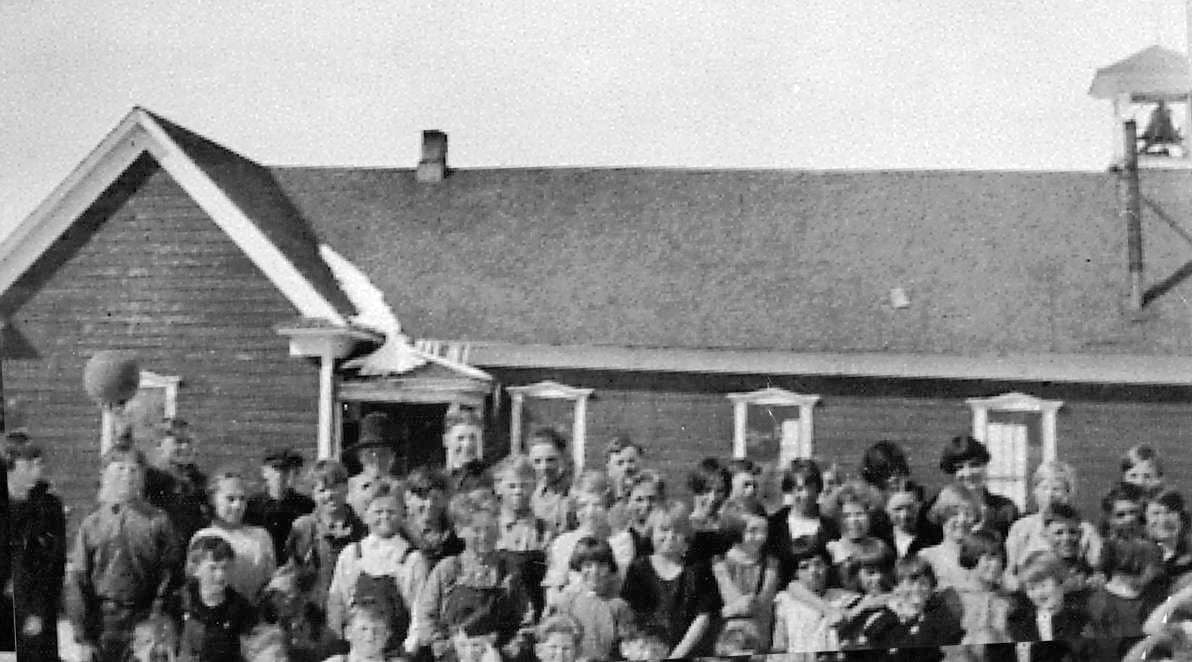
The old Darby church now houses the Teton Valley branch of the National Outdoor Leadership School (NOLS). Photo Courtesy of Teton Valley Museum. Photo Courtesy of NOLS.
The old Darby church now houses the Teton Valley branch of the National Outdoor Leadership School (NOLS). Photo Courtesy of Teton Valley Museum. Photo Courtesy of NOLS.
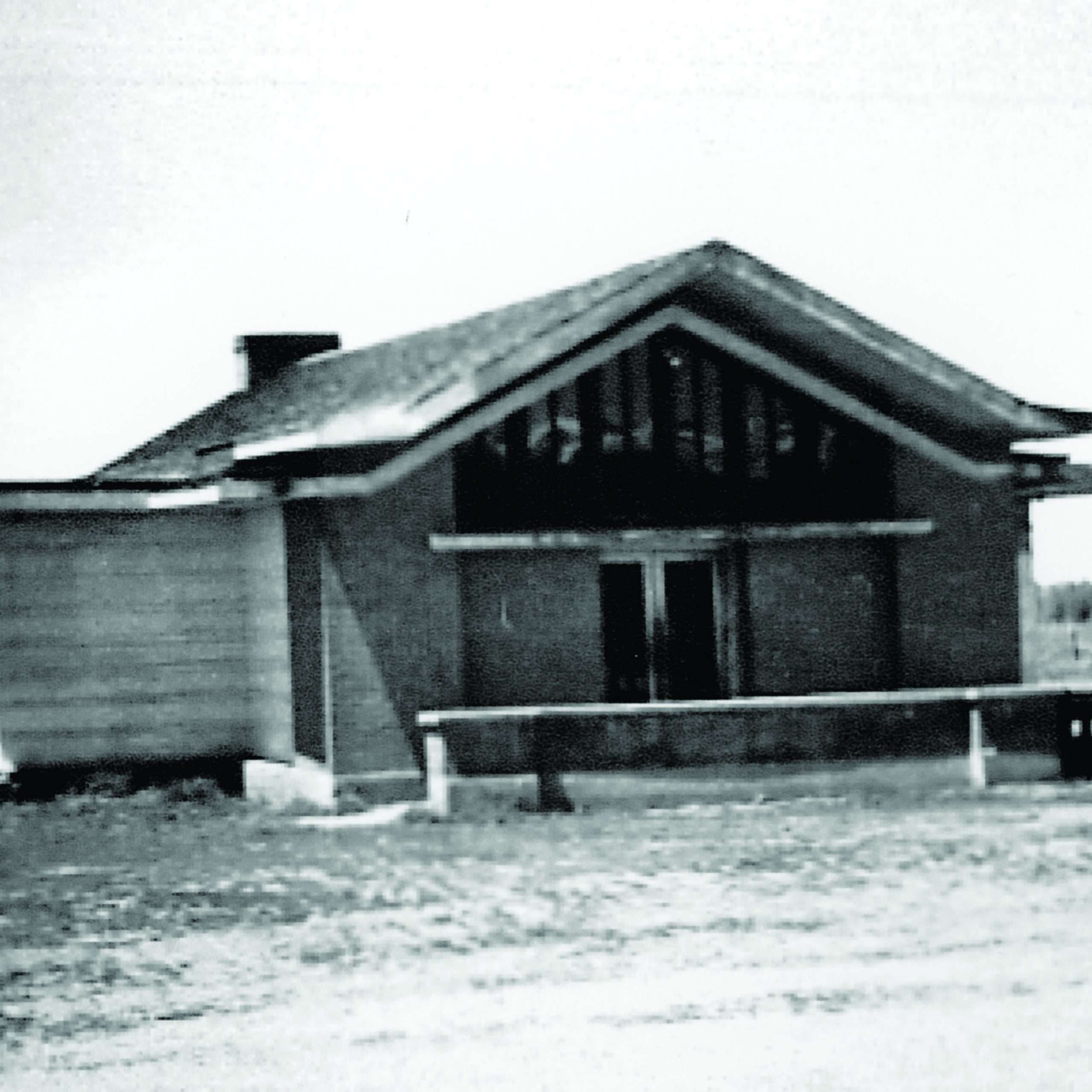
The old Clawson church house is now home to the Drawknife Billiards showroom and administrative offices. Photo courtesy of Teton Valley Museum.
The old Clawson church house is now home to the Drawknife Billiards showroom and administrative offices. Photo courtesy of Teton Valley Museum.

The old Darby church now houses the Teton Valley branch of the National Outdoor Leadership School (NOLS). Photo Courtesy of Teton Valley Museum. Photo Courtesy of NOLS.

The old Clawson church house is now home to the Drawknife Billiards showroom and administrative offices. Photo courtesy of Teton Valley Museum.
THE TRANSITION OF THESE CHURCH HOUSES has no doubt resulted in mixed emotions for those who worshipped in them. Still, many of the structures remain an important part of valley residents’ lives today, each blending the past and present in a unique way.
Consider Hans Hibbert, who recalls as a child engaging in warfare play with the other boys, pegging one another with the red berries growing outside the Chapin church house (located near Fox Creek and Highway 33). He later moved to the Darby Ward, and then became bishop of the Pratt Ward. Today, Hibbert’s role as a scoutmaster takes him to the old Darby church house, and he regularly visits the Chapin church, home of friends Carol Taylor and Dr. Robert Partridge—members of Saint Francis of the Tetons.
“I guess it is a little unique, being a member of all [of these] wards and still being here,” reflects Hibbert, today a member of the Driggs Second Ward. “It’d be nice to go back and have it just as it was, but change is part of life; buildings don’t last forever, organizations don’t last forever. You look forward to the future and hope it turns out as good as the past.
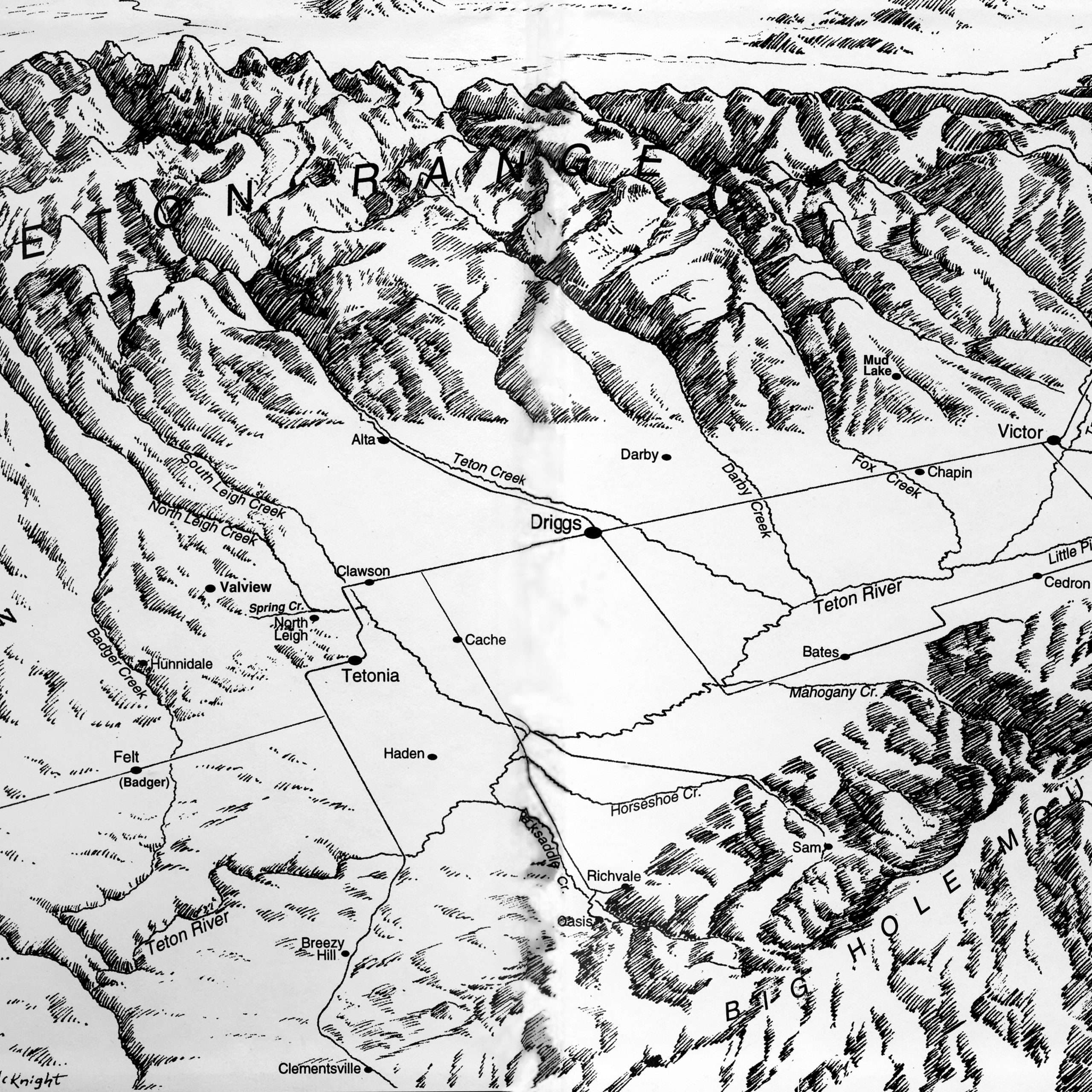
Stake House Map
